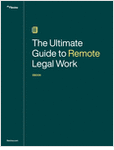Structuring data into databases has long been a solution to store complex data that can be retrieved and reported in variable ways. That data solution, however, has a legal problem in the e-discovery context.
It took years for many litigators and judges to become comfortable with discovery of e-mail and other electronic records. But as more forms of electronic records enter into discovery disputes, lawyers are back on unfamiliar ground. “There are still types of evidence that lawyers prefer to ignore and hope will go away, the way e-mail discovery was ten years ago,” says Rob Brunner, who leads the Financial and Enterprise Data Analytics practice at FTI Consulting. “And I hate to say it, but e-mail was an easy problem compared to what’s next.”




